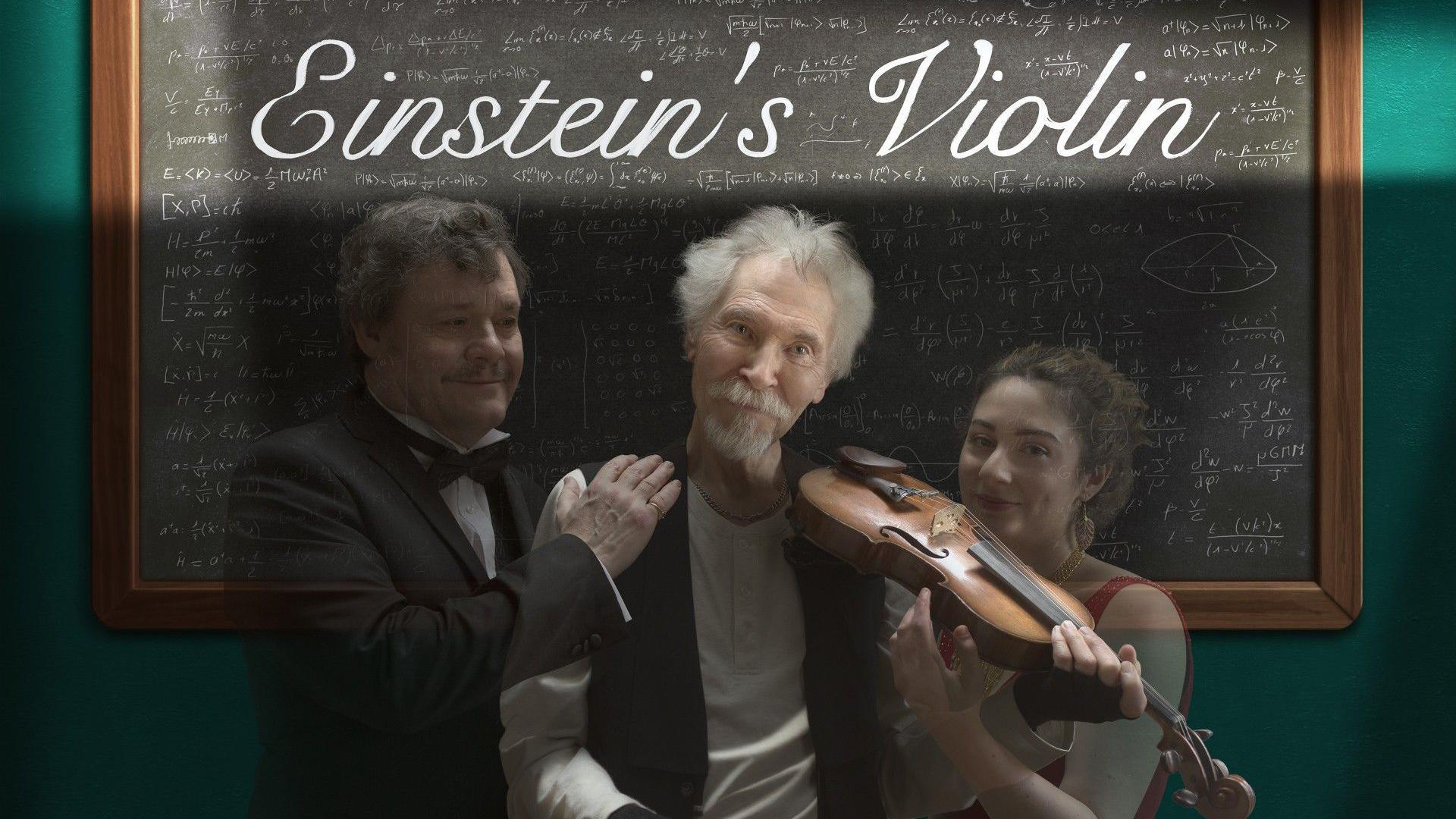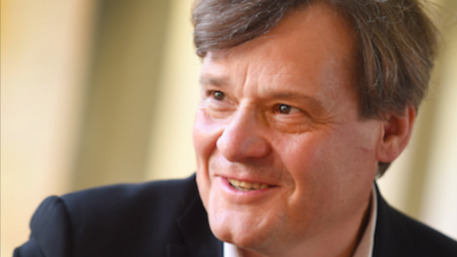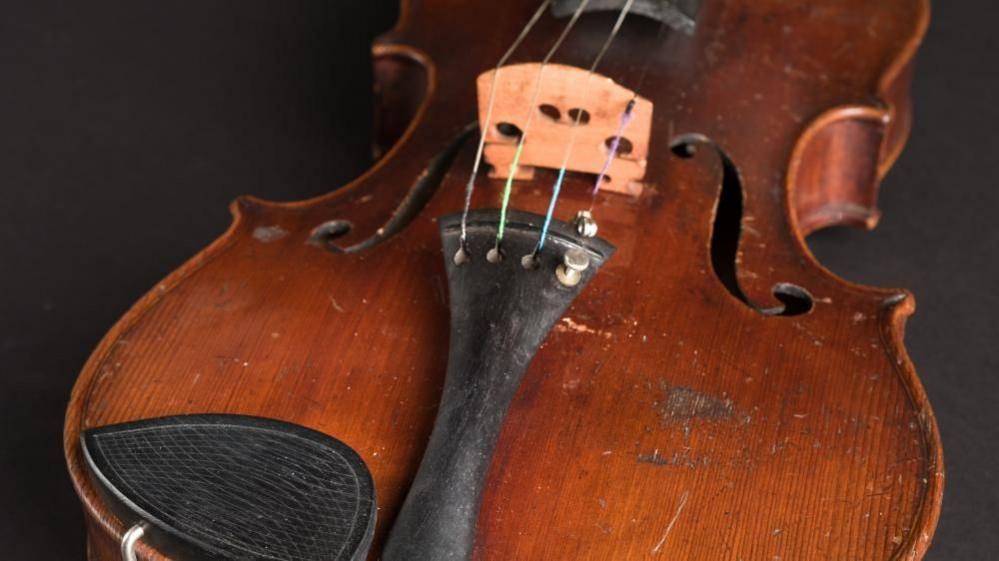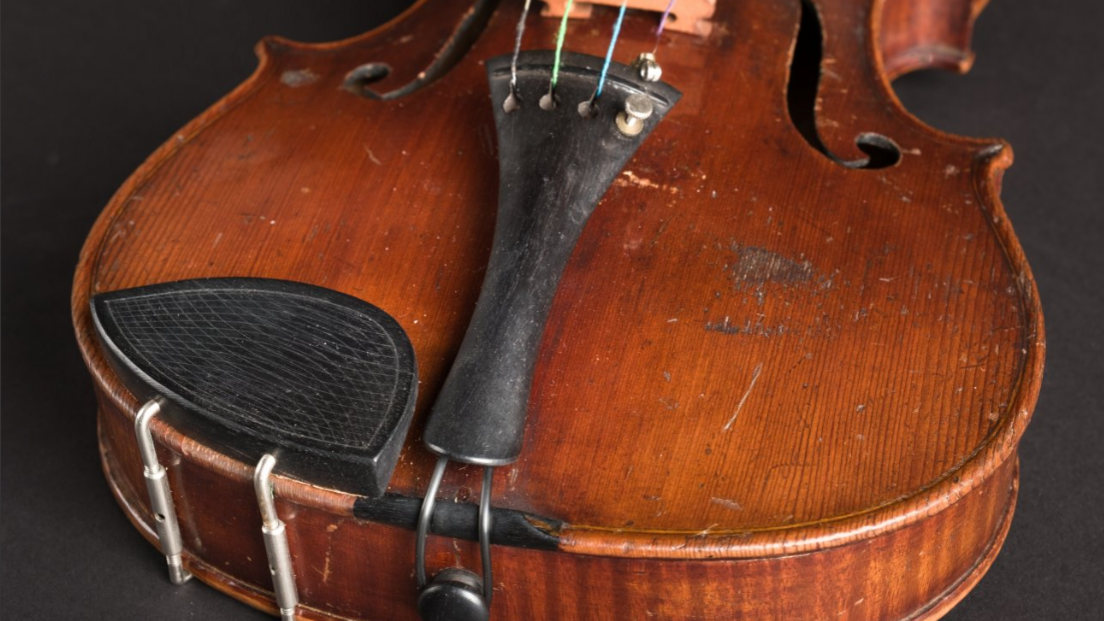Einstein's violin verified by Cambridge composer

The play Einstein's Violin tells the story of the physicist's life through music
- Published
Dr Paul Wingfield never imagined that attending his brother-in-law's wake would lead him to authenticate a violin once owned by Albert Einstein.
"I just set out to write this musical about Einstein," says Dr Wingfield, 63, a composer and director of studies in music at Trinity College, Cambridge.
The idea came to him when he saw a copy of Einstein for Beginners, co-authored by his late brother-in-law, Joseph Schwartz, next to a family photo of a young boy playing the violin.
That moment sparked the creation of Einstein's Violin, a drama that reimagined Einstein's life through music, and unexpectedly made Dr Wingfield the ideal person to check the provenance of the instrument, which recently sold for £860,000.

Dr Wingfield said he was not an expert on 19th Century violins but, by a quirk of circumstance, his extensive research into Einstein's musical life made him the ideal person to investigate the violin
Dr Wingfield spent six months researching Einstein's musical interests, collecting everything the physicist had written or said about music.
The drama premiered in Highgate, north London, in April and became a tribute to Mr Schwartz.
"I dedicated the show to him because I wrote it for him, really, in retrospect," he said, "He would have absolutely loved it."
But after one performance, Dr Wingfield received a message from an auctioneer which began with, "I'm not mad…" and asked for help verifying a violin that could have belonged to Einstein.
"I had a gut reaction when I first held it that it was genuine," he told the BBC.
"But that just makes me even more suspicious. So I had to go and look at all the documents, all the letters, scrutinise the violin and find details just to get every single element to make sure I thought it was his."
It had the inscription "Lina" - a name Einstein gave to all his violins.
"He was 15 when he got this violin. That's the sort of thing an adolescent might do, I suppose," Dr Wingfield said.
He even compared the inscription to Einstein's school-age handwriting and found a match.
One of the most striking details was the violin's slightly longer body.
"It would need somebody with quite a big left hand, which does all of the fingering on the strings, to be comfortable playing it," he added.
"Then I found X-rays and graphs of Einstein's hands, and his left hand was indeed bigger than his right. That was quite an exciting discovery."

Dr Wingfield says he has acquired knowledge about topics including 19th Century varnishes, the precise measurements of Einstein's hands - and even inter-war Belgian customs regulations
The 1894 Zunterer violin was expected to fetch about £300,000, but sold for £860,000 when went it under the hammer at Dominic Winter Auctioneers in South Cerney, Gloucestershire, last week.
"There was a huge amount of tension in the room," Dr Wingfield said.
"We were all a bit shell-shocked at the end when the hammer finally went down... it was quite an emotional moment, but I'm really happy to have held it in my hand, being involved with it and its life, and I hope that one day somebody else will play it."
Get in touch
Do you have a story suggestion for Cambridgeshire?
Follow Cambridgeshire news on BBC Sounds, Facebook, external, Instagram, external and X, external.
- Published8 October

- Published12 September
